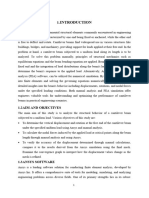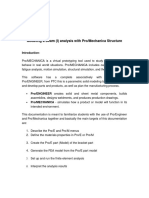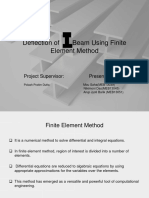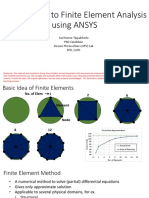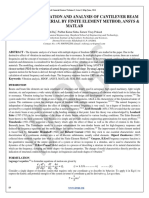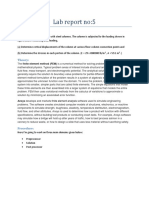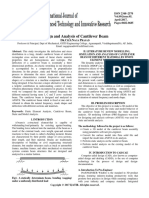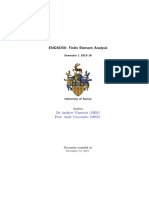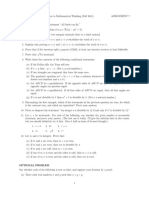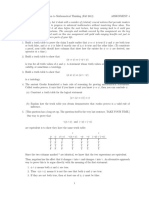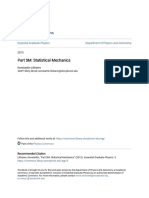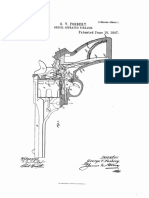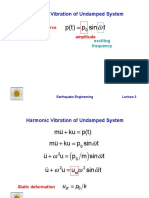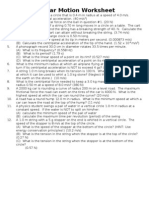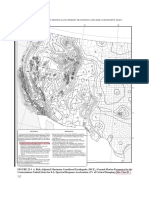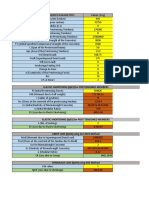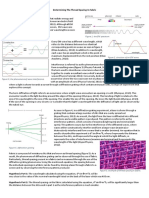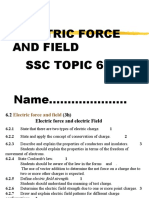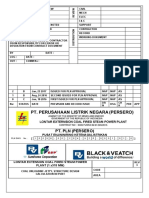0% found this document useful (0 votes)
6 views35 pagesFem Lab
The laboratory report on Finite Element Analysis (FEM) submitted by Apoorva Singh details various experiments conducted using ANSYS software, focusing on the analysis of cantilever beams, flat plates with holes, and 2-D truss structures. Each experiment aims to understand the effects of applied loads on structural behavior, including equivalent strain, stress, total deformation, and strain energy. The report emphasizes the importance of FEM in predicting system behavior and optimizing engineering designs.
Uploaded by
apoorva singhCopyright
© © All Rights Reserved
We take content rights seriously. If you suspect this is your content, claim it here.
Available Formats
Download as PDF, TXT or read online on Scribd
0% found this document useful (0 votes)
6 views35 pagesFem Lab
The laboratory report on Finite Element Analysis (FEM) submitted by Apoorva Singh details various experiments conducted using ANSYS software, focusing on the analysis of cantilever beams, flat plates with holes, and 2-D truss structures. Each experiment aims to understand the effects of applied loads on structural behavior, including equivalent strain, stress, total deformation, and strain energy. The report emphasizes the importance of FEM in predicting system behavior and optimizing engineering designs.
Uploaded by
apoorva singhCopyright
© © All Rights Reserved
We take content rights seriously. If you suspect this is your content, claim it here.
Available Formats
Download as PDF, TXT or read online on Scribd
/ 35
